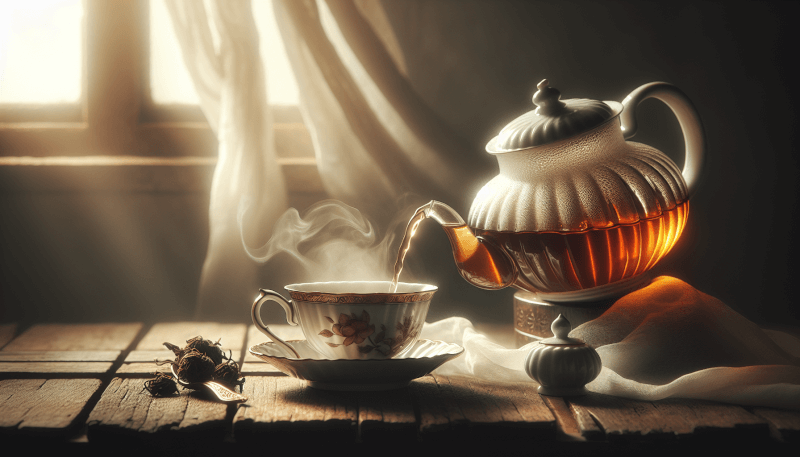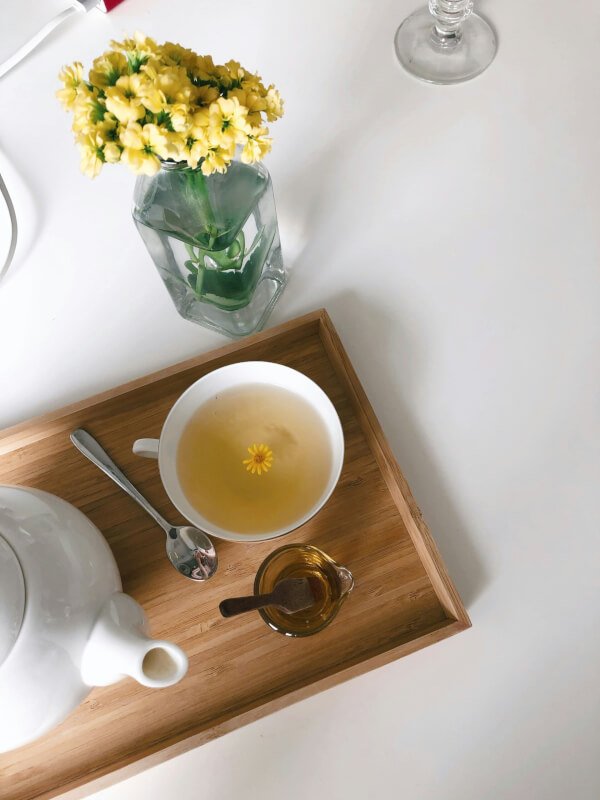Imagine being able to improve your health while enjoying a comforting and delicious beverage. With “The Ultimate Guide to Brewing Tea for Health Benefits,” you’ll discover the secrets to harnessing the power of tea to enhance your overall well-being. Whether you’re a tea aficionado or new to the world of tea, this guide will provide you with all the information you need to brew the perfect cup and unlock the countless health benefits that tea has to offer. From boosting your immune system to promoting relaxation, this ultimate guide is your key to a healthier lifestyle. So grab your favorite teapot and get ready to embark on a journey of taste and wellness!
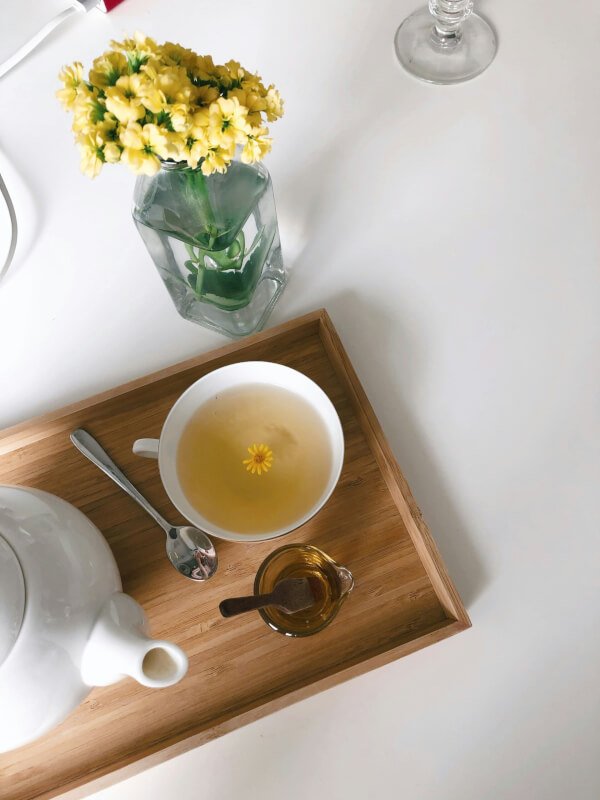
Choosing the Right Tea
Understanding different types of tea
When it comes to selecting the perfect tea, it’s important to understand the different types available and their unique characteristics. From green and black to oolong and white, each type of tea has its own distinct flavor profile and health benefits. Green tea, for example, is known for its refreshing and grassy taste, as well as its high content of antioxidants. Black tea, on the other hand, is often described as bold and robust, with a higher caffeine content. Oolong tea lies somewhere in between, with a smooth and balanced flavor. White tea, with its delicate and subtle taste, is often considered the most gentle and least processed of all teas. By understanding these differences, you can choose the tea that best suits your personal preferences and desired health benefits.
Selecting organic and high-quality tea
When choosing tea, it’s worth considering the quality and sourcing of the leaves. Opting for organic tea ensures that you are consuming a product free from harmful pesticides and other chemicals. Organic teas are grown using sustainable farming practices and promote soil and environmental health. Additionally, selecting high-quality tea leaves can greatly enhance your brewing experience. Look for teas that are hand-picked, as this ensures that only the finest leaves are selected. Loose leaf tea is also preferred over tea bags, as it often contains larger, more intact leaves that can provide a better flavor and aroma. Investing in good-quality tea will not only elevate your tea-drinking experience but also allow you to enjoy the full range of health benefits that tea has to offer.
Water Temperature and Timing
Determining the ideal water temperature
The water temperature plays a crucial role in bringing out the best flavors and health benefits of your tea. Different types of tea require different water temperatures to achieve optimal results. Generally, green teas are best brewed at lower temperatures, around 160 to 180°F (70 to 82°C). Black teas, on the other hand, benefit from hotter water, typically around 200 to 212°F (93 to 100°C). Oolong teas fall in between, with a recommended brewing temperature of 180 to 200°F (82 to 93°C). White teas are delicate and should be brewed with water just below boiling point, around 160 to 180°F (70 to 82°C). By paying attention to the water temperature, you can ensure that the flavors of your tea are perfectly balanced and that the health-promoting compounds are extracted optimally.
Timing for steeping different types of tea
The duration of steeping also greatly affects the taste and strength of your tea. Steeping time can vary depending on the type of tea and personal preference. As a general guideline, green teas typically require a shorter steeping time, usually around 2 to 3 minutes. Black teas, on the other hand, benefit from a longer steeping time of 3 to 5 minutes to fully develop their flavors. Oolong teas fall somewhere in between, requiring around 3 to 4 minutes of steeping. White teas are delicate and often require a shorter steeping time of 2 to 3 minutes. Adjust the steeping time according to your taste preferences, but be cautious not to over-steep, as this can result in a bitter taste.
Prepping Tea Leaves
Measuring the right amount of tea leaves
Finding the right balance between tea leaves and water is essential for a perfect brew. The general rule of thumb is to use around 1 teaspoon of loose leaf tea for every 8 ounces (240 ml) of water. However, this can vary depending on personal preference and the specific type of tea. Some teas may require more tea leaves to achieve a stronger flavor, while others may need less for a more delicate taste. It’s always best to refer to the guidelines provided by the tea manufacturer or experiment to find your perfect ratio. Remember, adjusting the amount of tea leaves can significantly impact the taste and strength of your brew, so don’t be afraid to customize according to your preferences.
Using the appropriate utensils
When it comes to brewing tea, using the right utensils can enhance the overall experience. Invest in a good-quality tea infuser or strainer that allows the tea leaves to unfurl and release their flavors effectively. These tools can be particularly useful for loose leaf tea, as they prevent the leaves from ending up in your cup. Teapots and kettles are also essential for brewing tea, as they provide the means to heat and pour water. Opt for teapots made of materials such as glass or ceramic, as they retain heat well and do not impart any unwanted flavors to your brew. By using the appropriate utensils, you can ensure that your tea is brewed precisely and that you are able to fully enjoy the flavors and aromas of the tea leaves.
Steeping Techniques
Understanding steeping methods
Steeping is the process of extracting the flavors and compounds from tea leaves using hot water. While there are various steeping methods, the most common and accessible is the traditional hot water infusion. This involves pouring hot water over the tea leaves and allowing them to steep for the desired amount of time. However, there are alternative steeping methods that can result in unique flavor profiles. One such method is cold brewing, which involves steeping tea leaves in cold water for several hours. Cold brewing tends to produce a smoother and less bitter tea, making it an ideal method for delicate teas like white tea. Another method is the Gongfu style, which originated in China and involves multiple short infusions with high leaf-to-water ratios. This technique is often used for oolong and pu-erh teas and can result in a more concentrated and complex flavor profile. Experimenting with different steeping methods can help you discover new and exciting flavors in your favorite teas.
Exploring alternative brewing methods
In addition to steeping methods, there are alternative brewing techniques that can also offer unique tastes and experiences. One such method is matcha preparation, which involves whisking powdered green tea with hot water to create a frothy and vibrant beverage. Matcha is known for its earthy flavor and high concentration of antioxidants. Another alternative brewing method is the use of teabags or sachets. Although loose leaf tea is often preferred for a richer flavor, teabags can be convenient and handy for a quick cup of tea. Many high-quality teas are now available in sachets that contain whole tea leaves, providing a better flavor and a more eco-friendly option compared to traditional paper teabags. Embracing alternative brewing methods can open up a world of possibilities and allow you to explore and appreciate tea from different angles.
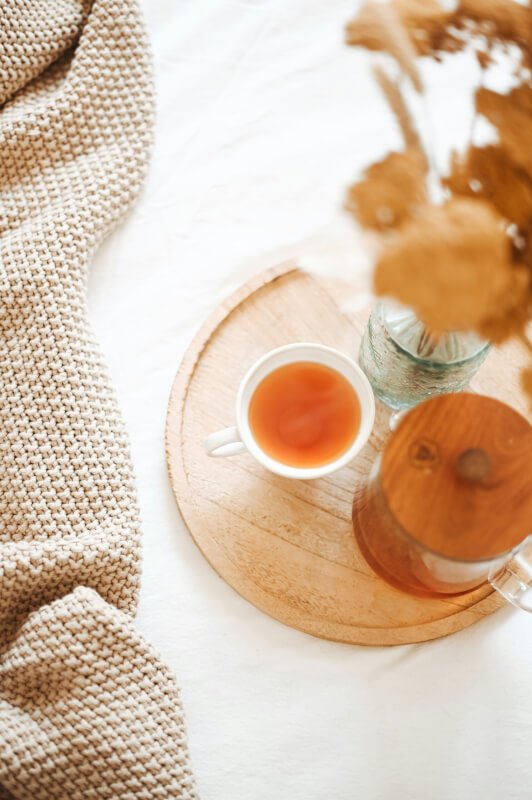
Enhancing Flavor and Aroma
Adding natural flavorings
If you’re looking to add an extra dimension to your tea, consider using natural flavorings. Common additions include fresh lemon or orange slices, a teaspoon of honey, or a sprinkle of cinnamon or ginger. These natural flavorings can complement the tea’s inherent taste and provide a refreshing twist. For example, adding a slice of lemon to black or green tea can help brighten the flavors and add a citrusy element. Honey can provide a touch of sweetness, while spices like cinnamon and ginger can add warmth and depth to your brew. Just be mindful not to overpower the delicate flavors of certain teas and experiment to find the perfect balance that suits your palate.
Utilizing aromatic herbs and spices
Herbs and spices can be used not only to enhance the flavor but also to elevate the aroma of your tea. Adding fresh mint leaves to green tea can create a refreshing and cooling effect, perfect for a hot summer day. Lavender or chamomile flowers can add a soothing floral note to herbal teas, promoting relaxation and tranquility. Cardamom, cloves, or star anise can be added to black tea to create a spiced chai-like experience. By utilizing aromatic herbs and spices, you can create a sensory journey with your tea, making each cup a delightful and aromatic experience.
Tea Brewing Tips
Testing teas for taste
As every tea is unique, it can be helpful to taste and evaluate different teas before committing to a full brew. Take a small amount of tea leaves and place them in a cup or the palm of your hand. Observe the appearance, smell the aroma, and even taste a small amount to get an idea of the tea’s characteristics. This allows you to understand the flavor profiles, strength, and complexity of the tea before brewing a larger batch. It also gives you the opportunity to experiment with different brewing times and water temperatures, tailoring the brewing process to your personal preference. Testing teas for taste ensures that you are fully satisfied with your brewed cup and can help you discover new favorites along the way.
Storing tea properly
To maximize the longevity and quality of your tea, it’s important to store it properly. Tea should be kept away from light, moisture, heat, and strong odors, as these factors can affect its flavor and aroma. Ideally, store your tea in an airtight container in a cool, dry place, away from direct sunlight. Avoid storing tea near spices or other strong-smelling substances, as tea leaves are porous and can absorb odors easily. It’s also beneficial to keep different types of tea separate, as their unique flavors can mingle and affect each other. By storing your tea properly, you can ensure that it remains fresh and flavorful for an extended period, allowing you to fully enjoy your tea time.
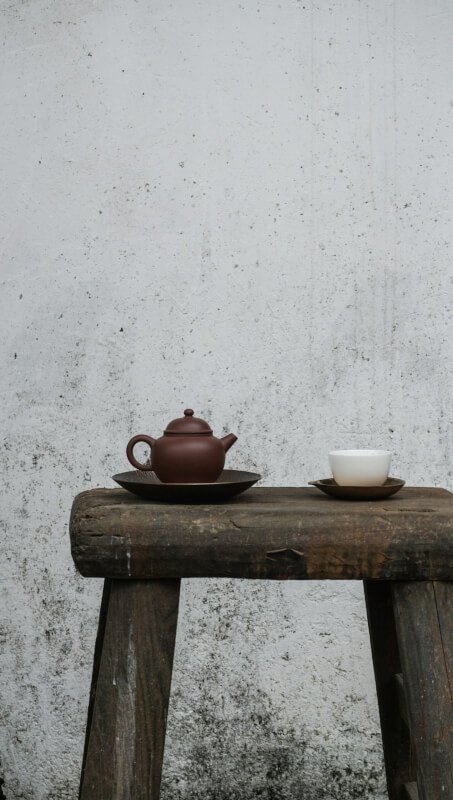
Choosing the Right Tea Accessories
Teapots and kettles
Teapots and kettles are not only essential for brewing tea but can also become cherished accessories in your tea-drinking routine. Teapots come in various shapes and sizes, each offering a unique brewing experience. Ceramic or porcelain teapots are popular choices, as they retain heat well and do not affect the taste of the tea. Glass teapots, on the other hand, allow you to witness the beautiful dance of the tea leaves as they steep, creating a visual spectacle. Electric kettles are convenient for easily heating water to the desired temperature, while stovetop kettles provide a classic and nostalgic experience. Whichever option you choose, finding the right teapot or kettle can enhance your tea brewing process and make it a delightful ritual.
Infusers and strainers
For loose leaf tea enthusiasts, infusers and strainers are indispensable accessories. These tools allow you to effortlessly steep loose tea leaves while preventing them from ending up in your cup. Infusers come in various forms, including the classic ball infuser, basket infuser, and even novelty shapes like tea infuser animals. Strainers, on the other hand, are beneficial when pouring tea from a teapot into individual cups. They catch any stray leaves or particles, ensuring a smooth and enjoyable tea-drinking experience. Look for infusers and strainers made from food-grade materials such as stainless steel or silicone, as these are durable, easy to clean, and do not impart any unwanted flavors to your tea.
Pairing Tea with Food
Understanding tea and food interactions
Pairing tea with food is an art that can greatly enhance both the flavors of the tea and the dining experience. Just like with wine, different teas have unique flavor profiles that can complement or contrast with different types of cuisine. Light and floral teas, such as green or white teas, pair well with delicate dishes like salads, seafood, or light desserts. The subtle flavors of these teas can harmonize with the lightness and freshness of the food. On the other hand, bold and robust teas, such as black tea or pu-erh tea, can stand up to rich and robust flavors. They can pair well with savory dishes like grilled meats, cheeses, or chocolate-based desserts. Experimenting with tea and food pairings can create a symphony of flavors and elevate your culinary experiences.
Best tea pairings for different dishes
To help you get started on your tea and food pairing journey, here are some recommendations:
Green tea: Pair with sushi, steamed fish, light salads, or fruit-based desserts for a refreshing and balanced combination.
Black tea: Enjoy with hearty breakfasts, grilled meats, rich desserts like chocolate cake, or alongside a cheese platter for a bold and satisfying experience.
Oolong tea: Match with roasted vegetables, stir-fries, or spiced dishes to bring out the tea’s complexity and complement the flavors.
White tea: Sip alongside delicate pastries, light sandwiches, or enjoy on its own to fully appreciate its delicate and nuanced flavors.
Remember, these pairings are a starting point, and personal preferences may vary. Feel free to experiment and find the combinations that delight your taste buds and create memorable dining experiences.
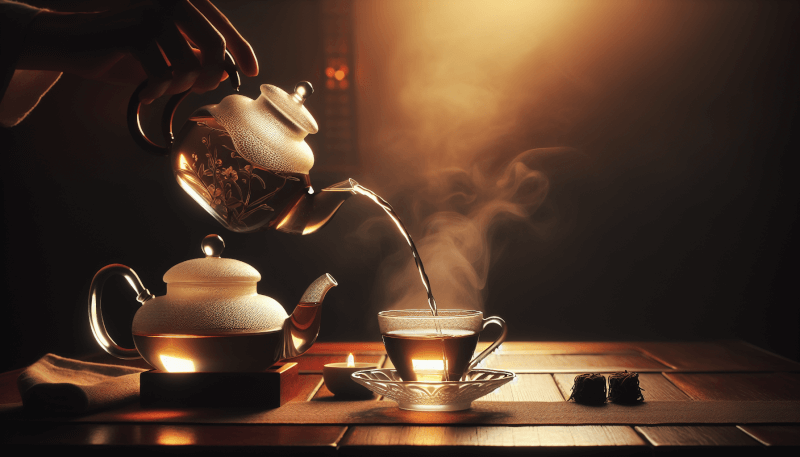
Understanding Tea Terroir
Exploring the impact of origin on tea quality
Just like with wine, the concept of terroir applies to tea as well. Tea terroir refers to the environmental factors that influence the flavor and quality of tea leaves, such as soil composition, climate, altitude, and even the surrounding flora. Different tea-growing regions produce teas with unique characteristics and flavor profiles. For example, teas from Darjeeling in India are celebrated for their light and floral notes, while teas from Assam in the same country are known for their robust and malty flavors. China’s Fujian province is renowned for its oolong teas, which offer a rich and complex taste. By exploring the impact of terroir on tea, you can develop a deeper appreciation for the diverse flavors and nuances that teas from different regions have to offer.
Identifying notable tea regions
Tea is grown in various regions around the world, each with its own distinct tea culture and renowned tea-producing areas. Some notable tea regions include:
Assam, India: Famous for its bold and malty black teas, Assam is one of the largest tea-producing regions in the world.
Darjeeling, India: Known as the “Champagne of Teas,” Darjeeling produces delicate and fragrant black, green, and oolong teas.
Yunnan, China: Considered the birthplace of tea, Yunnan is known for its pu-erh teas, which undergo fermentation and aging to develop a rich and earthy flavor.
Uji, Japan: Home to high-quality matcha and green teas, Uji has a long history of tea cultivation and is praised for its vibrant and savory teas.
Nuwara Eliya, Sri Lanka: Situated in the central highlands, this region produces bright and aromatic Ceylon black teas.
Exploring teas from different regions allows you to discover the diverse flavors and traditions associated with each area. It’s an opportunity to embark on a global tea-tasting adventure without leaving the comfort of your home.
Exploring Tea Varieties and Their Benefits
Green tea and its health benefits
Green tea is celebrated for its numerous health benefits. Rich in antioxidants called catechins, green tea has been associated with improved brain function, increased fat burning, and a reduced risk of chronic diseases. The catechins in green tea can help boost metabolism and aid in weight loss. It also contains L-theanine, an amino acid that promotes relaxation and mental clarity. Regular consumption of green tea has been linked to a lower risk of heart disease and certain types of cancer. Additionally, the antioxidants in green tea can benefit skin health and contribute to a radiant complexion. Incorporating green tea into your daily routine can be a simple and effective way to enjoy its health-enhancing properties.
Black tea for overall well-being
Black tea, known for its robust and bold flavor, offers its own set of health benefits. Packed with flavonoids and antioxidants, black tea has been associated with improved heart health, reduced blood pressure, and lower cholesterol levels. The caffeine in black tea can provide an energy boost and increase alertness. Black tea also contains compounds that may help strengthen the immune system and promote digestive health. Some studies suggest that the polyphenols in black tea may have potential cancer-fighting properties. By adding black tea to your tea rotation, you can enjoy its rich taste while reaping the many health benefits it has to offer.
Herbal teas and their medicinal properties
Herbal teas, also known as tisanes, are not technically teas as they are not derived from the Camellia sinensis plant. Instead, they are made from various herbs, flowers, fruits, and spices, offering a wide range of flavors and potential health benefits. Chamomile tea, for example, is known for its calming and sleep-inducing properties. Peppermint tea can help soothe digestion and relieve stomach discomfort. Rooibos tea, native to South Africa, is caffeine-free and rich in antioxidants, making it a popular choice for those seeking a caffeine-free alternative. Herbal teas can be a flavorful and therapeutic addition to your tea collection, providing a natural and soothing way to support your well-being.
With a wide variety of teas to choose from, each with its own set of unique characteristics, brewing techniques, and health benefits, the world of tea is truly vast. By understanding and exploring different types of tea, selecting high-quality leaves, mastering the art of brewing, and experimenting with flavors, you can turn your tea-drinking experience into a delightful and health-enhancing ritual. So take a moment to steep a cup of tea, sit back, and savor the soothing warmth and flavors that this ancient beverage has to offer. Cheers to your journey of tea exploration!
